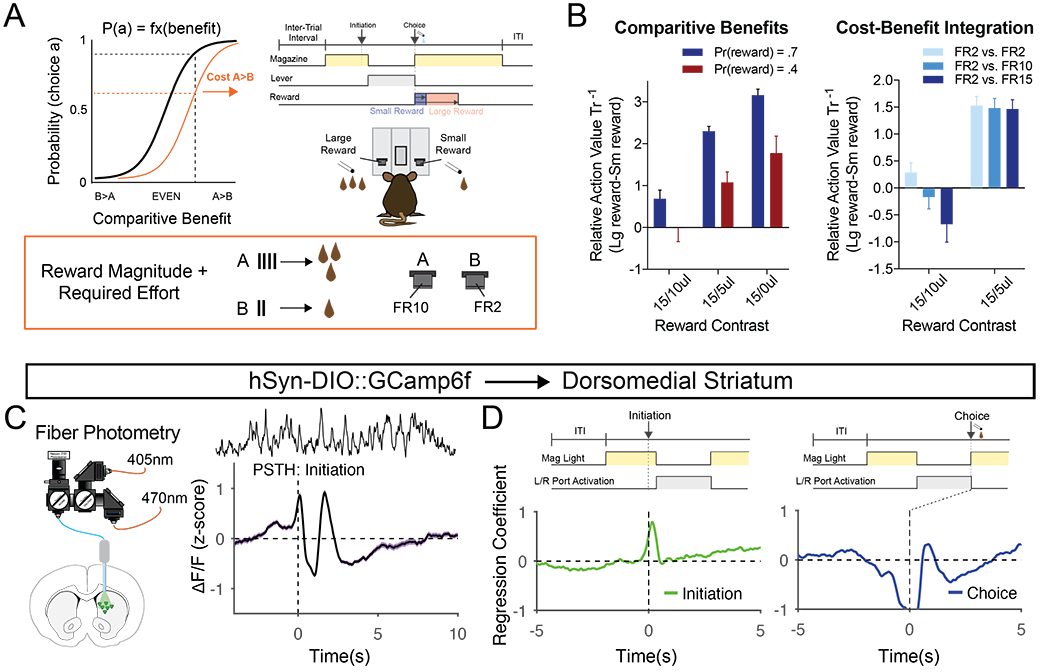How do specific neural circuits shape behavioral control?
The striatum is considered a central node for behavioral organization as it links neural circuitry computing decision-relevant information to neuronal populations responsible for the execution of discrete behavioral responses. How do striatal circuits support action selection and how do dysfunction of these circuits manifest behaviorally?
We address these questions through multiple behavioral assays — video-tracking and force-plate analyses of overall behavioral output, motor learning tasks and operant paradigms exploring value-based flexible behavioral responding and response inhibition. We aim to break down complex behaviors into discrete, measurable quantities to facilitate their correlation with the function of specific brain circuits via in vivo recording of neuronal activity or targeted cellular manipulations.

Paradigm to study value-based choice in mouse models of neuropsychiatric disease. (A) Operant protocols to probe individual animal choice patterns based on outcome value. (B) Mice shift response bias as a function of relative rewards and total effort required to obtain those rewards. (C,D) In vivo imaging of spiny neuron calcium activity during operant behavior, showing specific signals during the initiation and choice epochs.

